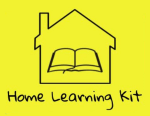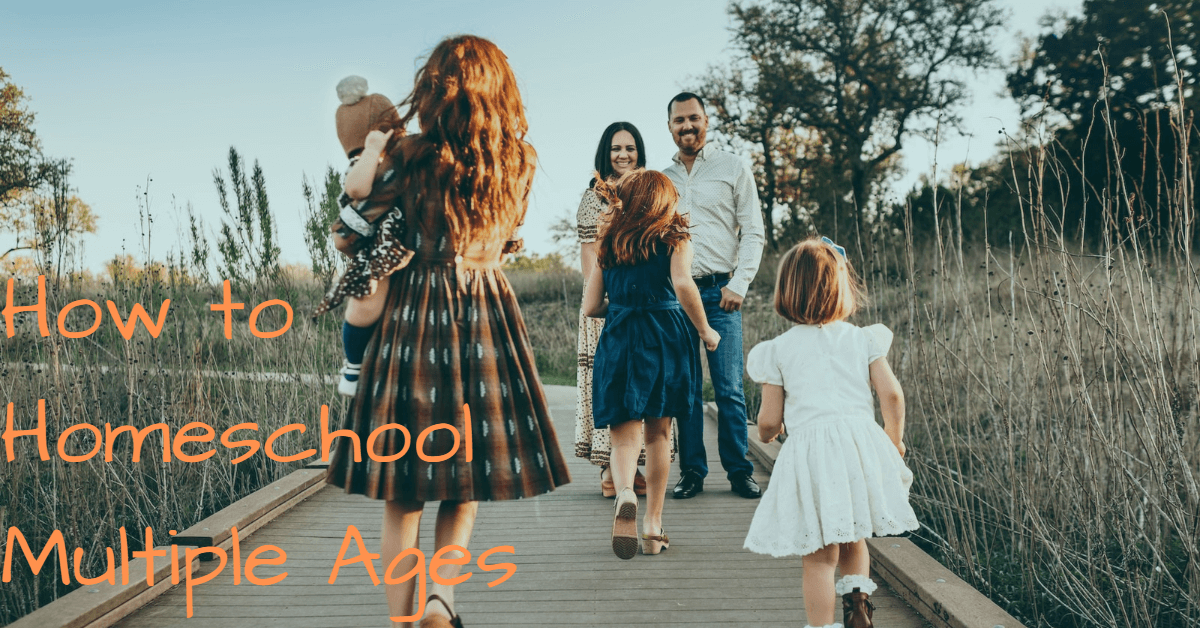One of the most challenging parts of homeschooling is figuring out how to homeschool multiple ages of children. Looking at all the different topics you need to cover at various levels can be overwhelming, not to mention dealing with your kids who aren’t part of the lesson.
Below, I go into detail about the framework I think is most useful to manage homeschooling multiple ages:
- Routine
- Family Time
- Group Learning
- One-on-One Learning Blocks
Figure Out Your Routine
If you’re like me, you probably live and breathe by a schedule. Unfortunately, a homeschool isn’t a great place to stick to a schedule: kids make messes, have meltdowns, have potty accidents, and so on.
Instead, you should work on developing a routine without fixed time constraints. Here’s some best practices:
- Determine how you want to start your day. I would recommend starting with family time (more below).
- Track how your day usually goes.
- Do your kids do better in the morning or in the afternoon?
- Are there appointments or engagements on your schedule you need to work around?
- Plan short lessons. Kids do not have long attention spans and learn best with regular breaks. Plus, shorter lessons will allow you more flexibility in keeping up with your routine.
- Use a Loop Schedule for when (not if) you miss a subject.
Start Your Day with Family Time
Every day of homeschool should start with family time. Not only does it make sense since you’re probably all getting up and having breakfast together, but it’s a good time to set expectations and get on the same page together.
Usually, this will be time spent reading a book together, memorizing something like prayers or poetry, playing games, and more! This also helps your day flow into group learning time smoothly.
Identify Subjects for Group Learning
Many subjects work well for group lessons when homeschooling multiple ages. These subjects are a great opportunity to have all (or most) of your kids learning together.
If you have older kids, they can even help with the lessons by presenting to the younger kiddos (what schooling experience is complete without awkward presentations?).
Some examples of subjects that work for group learning are:
- Science: I like to teach science in layers. The same topic can be taught for several years, but a new, more difficult, layer is added each year. For example, kindergarteners would learn about the different types of animals. In later years, you add layers to discuss more features of animals (mammals, marsupials, etc.) habitats, food webs, and more.
- Social Studies: Shared lessons in topics like history and geography are some of the easiest to do. While your older kids learn more about things like peninsulas, canyons, or continental plates, your younger kids could work on coloring a map.
- Art: If you decide to have a separate art section, it’s easy to have projects of varying difficulties for all ages.
- Music: Your younger kids can play around with things like xylophones, drums, or maracas, while your older kids may start learning to read music and play the piano.
Thematic Units are also a really good way to build lessons for multiple age groups around the same theme.
One-On-One Learning Blocks
For subjects that can get more difficult and vary a lot based on grade level, you’ll have to plan learning blocks for some one-on-one teaching.
The question is, how do you keep the other kids from flooding the bathroom, raiding the pantry, or discovering the knife block while you’re doing your learning block?
Here are some suggestions for handling the toughest part homeschooling multiple ages:
- If you have older kids who can handle it, have them play with the younger ones.
- Assign solo work like worksheets, reading, audiobooks, or doing puzzles to your unoccupied kiddos.
- Give your child free time to play and burn off some excess energy.
Not only will you be able to focus on one child at a time to work, but your children will get practice at independent play and independent learning when it isn’t their turn for one-on-one time.
Also, remember to keep these lessons short. Kids have short attention spans and short lessons will help avoid stress and let you check in on the other kids before they get into too much trouble.
Wrapping Up
If you take the time to plan and incorporate the suggestions above in your homeschool, you’re well on your way to a much saner homeschool.
Figuring out how to homeschool multiple ages is a big challenge, but one that basically every homeschool parent has overcome (insert joke about huge homeschool families :p).
Fortunately, homeschool affords us a lot of flexibility and you can keep trying different combinations and working with your kiddos until you find out what works for you. Every family is unique.
If you are looking for a way to boost your homeschool, please consider checking out The Home Learning Kit. It’s a curated package of useful learning tools and resources put together by me! Plus, they can be used for many grade levels (what a fortunate connection to the topic of this post).

The Home Learning Kit
I’d love to hear how you handle homeschooling multiple ages. Let me know what you like to do on social media!

